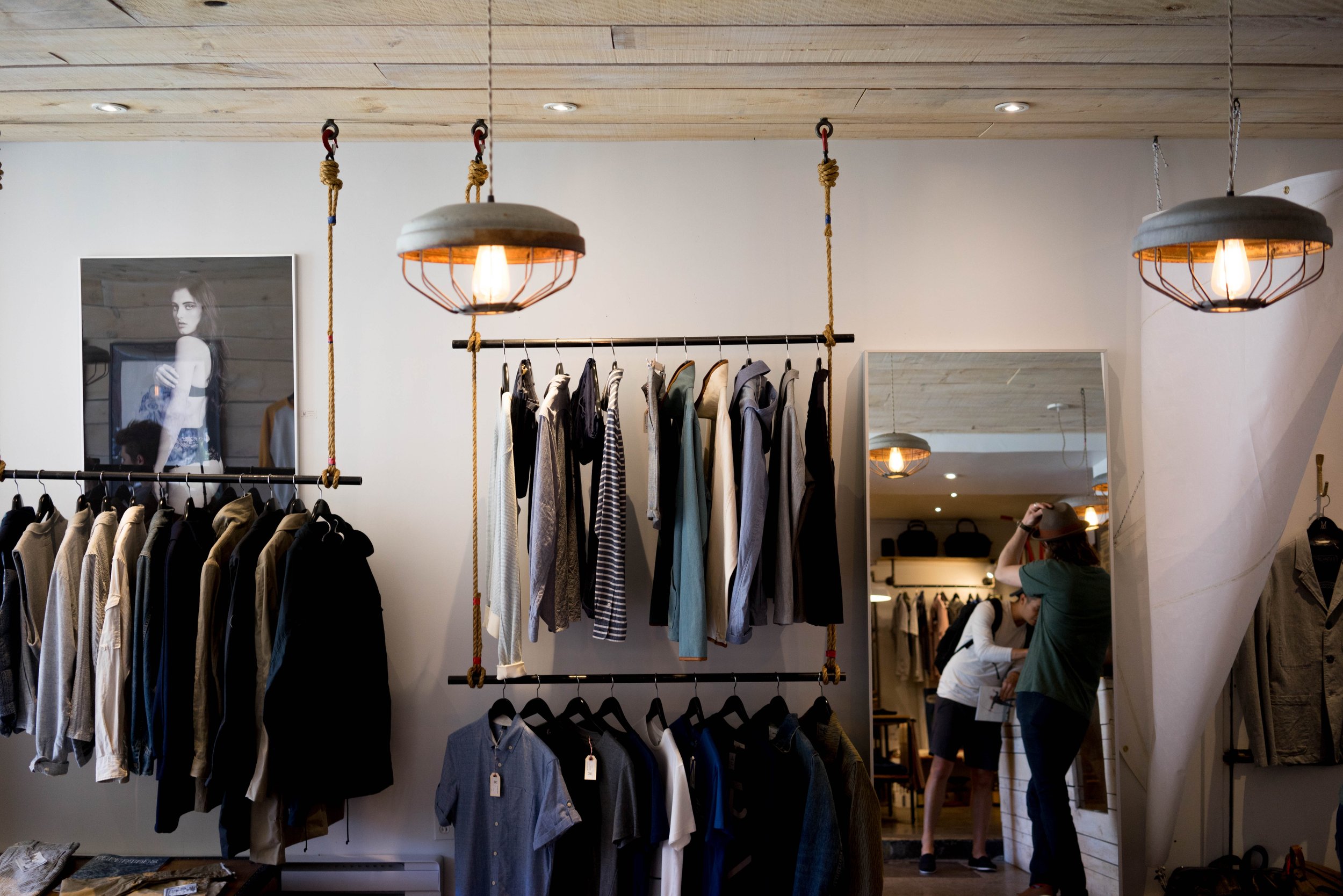The Impact of Social Media on Today's Boutique Fashion Trends
The Impact of Social Media on Today's Boutique Fashion Trends
Blog Article
Discovering the Evolution and Effect of Clothes on Modern Style Trends
The evolution of garments has considerably influenced modern fashion patterns, combining historical criteria with advanced developments. Famous numbers like Coco Chanel and Yves Saint Laurent revolutionized the apparel industry by presenting ideas that prioritize comfort and availability, which continue to reverberate today. Meanwhile, technological strides in areas such as 3D printing and wise textiles are redefining layout opportunities and customer experiences. Additionally, the expanding focus on inclusivity and sustainability is improving sector criteria. As we consider these multifaceted influences, one should question just how these elements collectively redefine fashion's duty in mirroring and shaping modern society.
Historical Fashion Influencers
In the tapestry of style history, particular numbers have left an enduring mark, forming the fads and styles that define entire periods. Coco Chanel, an innovative developer, redefined women's fashion by presenting comfy, classy apparel that left from restrictive corsets.
Elsa Schiaparelli is an additional essential figure, renowned for her progressive styles that incorporated surrealist art, teaming up with Salvador Dalí to create whimsical items that tested conventional appearances. Her cutting-edge use of shade and vibrant patterns reverberates in contemporary fashion. Yves Saint Laurent, on the other hand, equalized haute couture with prêt-à-porter collections, bringing runway designs to the masses and establishing a precedent for modern ready-to-wear lines.
These visionaries, to name a few, not just reinvented fashion in their times but also set sustaining patterns that resonate in today's apparel industry, supplying a structure whereupon contemporary designers remain to develop and introduce. Their legacies emphasize the value of creativity and daring in vogue's ever-evolving narrative.
Technological Advancements in vogue
Among the vibrant landscape of the style market, technological innovations stand at the forefront of advancement, improving just how designers develop and consumers involve with style. The integration of 3D printing has transformed style procedures, allowing designers to explore complicated frameworks and sustainable products that were previously unthinkable. This modern technology helps with fast prototyping, decreasing waste and accelerating manufacturing times.
Smart fabrics, embedding modern technology into textiles, are also changing the industry. Technologies like self-cleaning and temperature-regulating materials provide enhanced capability and comfort. Wearable modern technology, incorporating features like physical fitness monitoring and communication, adds a brand-new dimension to fashion, merging visual appeals with functionality.
Social Changes and Design
As technological advancements remain to improve the fashion business, cultural changes are equally prominent, redefining style and customer choices. Over the last few years, the increase of social media platforms has actually increased the circulation of international fashion fads, allowing varied social influences to exist together and merge. This electronic interconnectivity has assisted in the fast exchange of ideas, resulting in a much more eclectic and inclusive interpretation of style that mirrors the complex nature of modern society.
Cultural understanding and admiration have prompted developers to attract motivation from a more comprehensive spectrum of ethnic and historical contexts, incorporating traditional motifs with contemporary aesthetic appeals. This fusion has actually resulted in fashion that reverberates with a broader audience, promoting a feeling of identity and belonging throughout different demographics. Additionally, the boosting demand for personalization has actually driven brand names to offer personalized alternatives, enabling customers to express uniqueness while reflecting their social heritage.
Furthermore, shifting social worths have influenced style, with inclusivity and variety view publisher site coming to be main motifs. The market has begun to accept versions and influencers of various body types, ethnic backgrounds, and gender identities, difficult standard elegance criteria. This change highlights the power of cultural shifts fit the future of style, as style becomes an extra genuine expression of personal and cumulative identification.
Sustainability and Modern Style
While the fashion market continues to advance, the crucial for sustainability has ended up being significantly urgent, affecting modern-day layout techniques. The rise of slow-moving style, which highlights top quality over quantity, urges customers to invest in timeless pieces rather than short-term patterns.
In addition, contemporary design is identified by its technology in minimizing waste and advertising circularity. This technique not just minimizes environmental impact however also improves the social duty of fashion homes.

Future Trends in vogue

Sustainability will certainly proceed to be a driving pressure in forming future fashion trends. The market is increasingly adopting environmentally friendly products and honest production techniques, reacting to a growing customer demand for responsible methods. Advancements such as bio-fabricated products and closed-loop recycling systems are readied to redefine how clothes is produced and consumed, reducing environmental impact while keeping design and quality.
Social shifts, consisting of the surge of inclusivity and diversity, will certainly also play a crucial duty. As culture comes to be more familiar with social issues, style is expected to end up being a platform for expression and adjustment. Developers will likely concentrate on creating collections that mirror a more comprehensive variety of identities and experiences, championing representation and accessibility.
Conclusion
The advancement of garments substantially affects modern style fads, where historical influences combine with modern styles. This continuous advancement highlights fashion's duty as a mirror to social worths and technical improvement, suggesting a future rich with development and inclusivity.
The evolution of clothes has actually dramatically influenced contemporary fashion fads, combining historical precedents with sophisticated innovations.In the middle of the dynamic landscape of the fashion industry, technical advancements stand at the leading edge of technology, reshaping just how designers produce and consumers involve with fashion.While the style sector continues to progress, the crucial for sustainability has actually come to be increasingly urgent, influencing modern-day layout practices. As sustainability ends up being embedded in contemporary design, it paves the means for an extra mindful and accountable style sector.
The evolution of clothing dramatically impacts modern style fads, where historic impacts merge with modern styles.
Report this page